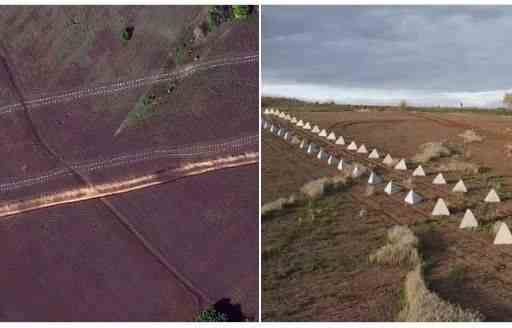White, pyramidal cement blocks as far as the eye can see to curb the Ukrainian troops. At least that’s the goal. The paramilitary group Wagner has begun construction of a fortified line of defense in the Luhansk region in eastern Ukraine. Patiently for ten days, the mercenaries install these “dragon teeth”. Two rows are arranged side by side and completed by a trench over hundreds of meters.
“A complex of fortifications is being built on the line of contact, commonly known as the ‘Wagner line’,” Wagner boss Evgeny Prigojine announced on October 19. According to this close friend of Vladimir Putin, this line of defense should not be “necessary” against the Ukrainian army, “the mere presence of Wagner units on the front line is already an impregnable wall”, according to him.
An ambition of 200 kilometers
Indeed, the Wagner line is a solution of last resort. The first sections can be observed thanks to satellite images near the village of Hirske in the Luhansk region or in the Donetsk region near Artemivsk, far from the front line. According to Evguéni Prigojine “it is a defense on several levels”.
However, he did not give details on the length of this line, its exact location or the time that the work could take. But according to our colleagues from France Info, the paramilitary group aims to erect these fortifications over 200 kilometers. Only two kilometers would be finished, according to a Telegram message from the Ukrainian governor of the Luhansk region.
A pessimistic route for Moscow
For now, the project is far from a 21st century Maginot line. The Russian news agency RIA FAN, which is owned by Yevgeny Prigozhin, the head of Wagner, published a map of this project. We can see that the fortifications aim to cut the Luhansk region in two and do not protect the city of Severodonetsk (Северодонецк, top left, just above the route).
If the Wagner group says that this protection will not be useful, this line could sign the feverishness of Moscow. Well advanced in the occupied territories, the “Wagner line” seems to predict the next front line. A separation which turns out to be much closer to the division made in 2014 between the pro-Russian territories and Ukraine, than the new regions annexed by disputed referendums at the end of September.

